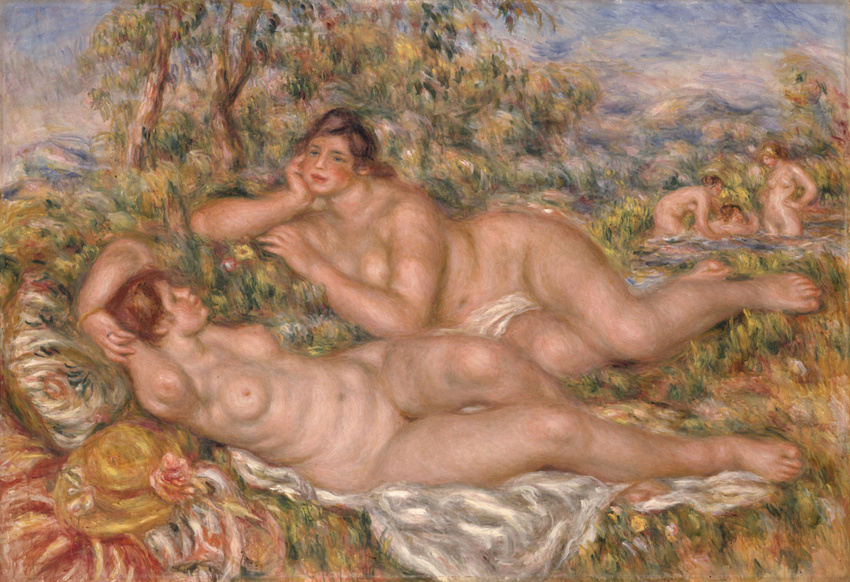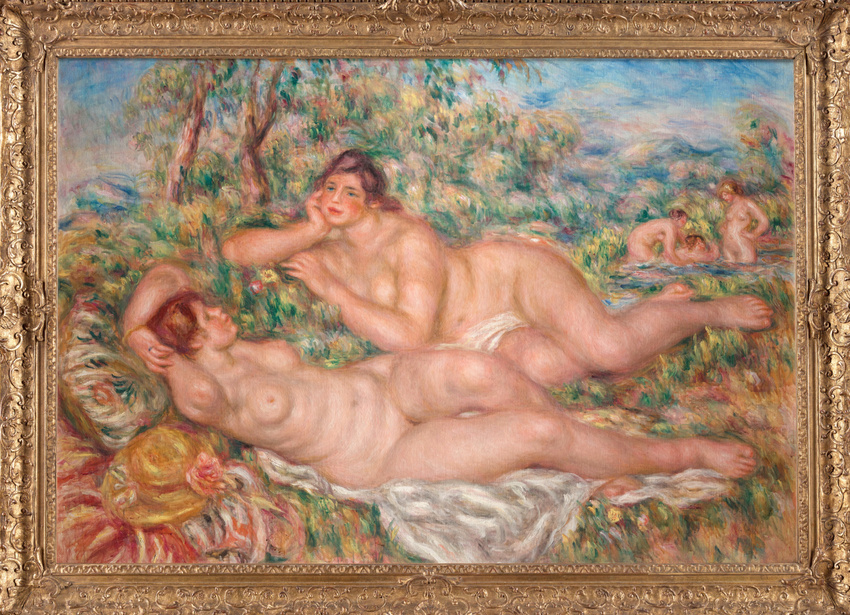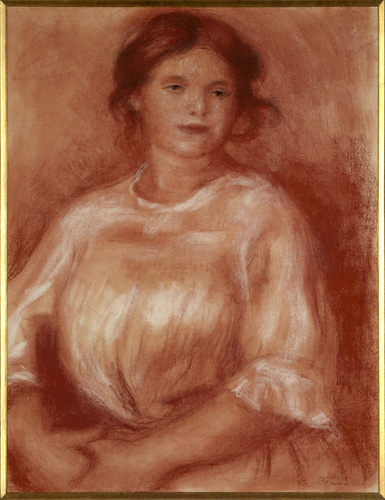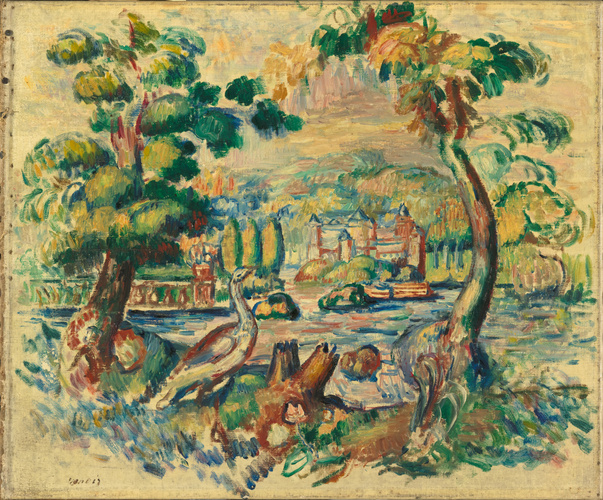-
Distel, Anne ; House, John ; Gowing, Lawrence, Renoir, cat. exp. (Londres, Hayward Gallery du 30/01/1985 au 21/04/1985 ; Paris, Galeries nationales du Grand Palais, du 14/05/1985 au 02/09/1985 ; Boston, Museum of Fine Arts, du 09/10/1985 au 05/01/1986), Paris, Réunion des musées nationaux, 1985, n° 125
-
Lemoine, Serge [commissariat général et introd.] ; Patry, Sylivie ; Shunsuke, Kijima ; Toubiana, Serge ; [et al.], Renoir / Renoir, cat.exp. (musée des beaux-arts Bunkamura, Tokyo, 2 février - 6 mai 2008 ; musée national d'art moderne, Kyoto, 20 mai - 21 juillet 2008), Tokyo, Nippon Television Network Corporation, 2008, repr. p. 14 et p. 22
-
Journiac, Virginie, Renoir au XXe siècle, cat. exp. (Paris, Galeries nationales du Grand Palais, 23 septembre 2009-4 janvier 2010), "Renoir à Cagnes" , Paris, Réunion des musées nationaux, 2010, n° 80
-
Cogeval, Guy ; Cahn, Isabelle, La Rivoluzione dello sguardo. Impressionismo e postimpressionismo dal Musée d'Orsay, cat. exp. (Rovereto, Museo d'Arte Moderna e Contemporanea di Trento e Rovereto, du 19 mars au 24 juillet 2011), Milan, Silvana, 2011, n° 64
-
Cogeval, Guy (dir.), Mathieu, Caroline (dir.), Jiménez, Burillo (dir), Cahn, Isabelle, Impressionismo. Paris e a modernidade : obras-primas, Musée d'Orsay, cat. exp. (Sao Paulo, 4 août-7 octobre 2012 ; Rio de Janeiro, 22 octobre 2012-13 janvier 2013 ; Madrid, 12 février-5 mai 2013), São Paulo / Madrid, Expomus / Fundación Mapfre, 2012, n° 16, p.101 (reprod)
-
Cogeval, Guy ; Patry, Sylvie ; Passoni, R., Renoir. Dalle collezioni del Musée d'Orsay e dell'Orangerie, cat. exp.(Turin, Galleria civica d'arte moderna e contemporanea, 23 ottobre 2013-23 febbraio 2014), Turin, [s.n.], 2013, n° 58
-
Ely, Bruno ; Vial, Marie-Paule, Le grand atelier du Midi, cat. exp. (Aix-en-Provence, musée Granet, 13 juin-13 octobre 2013 ; Marseille, musée des Beaux-Arts, 13 juin-13 octobre 2013), Paris, Réunion des musées nationaux ; Communauté du Pays d'Aix ; Ville , 2013, n° 116, p. 183 (reprod.)
-
Cogeval, Guy ; Burillo, Pablo Jiménez ; Fabre, Côme ; Guégan, Stéphane , El canto del cisne : pinturas académicas del Salón de París : colecciones Musée d'Orsay, cat.exp. (Madrid, Fundación Mapfre, 14 de febrero-3 de mayo de 2015, Madrid, Musée d'Orsay ; Fundacion Mapfre, 2015, n° 84, p. 252-253 (reprod.)
-
Perrin, Paul ; Pludermacher, Isolde ; Bernardi, Claire ; Bozal, Leyre ; Cogeval, Guy ; Jimenez Burillo, Pablo, Renoir entres mujeres : del ideal moderno al ideal clasico, colecciones de los museos d´Orsay y de l´Orangerie, cat. exp. (Barcelone, Fundacion Mapfre, Casa Garriga i Nogués, du 17/09/2016 au 08/01/2017), Barcelone / Paris, Fundacion Mapfre / musées d’Orsay et de l’Orangerie, 2016, n° 59, p. 202-203










